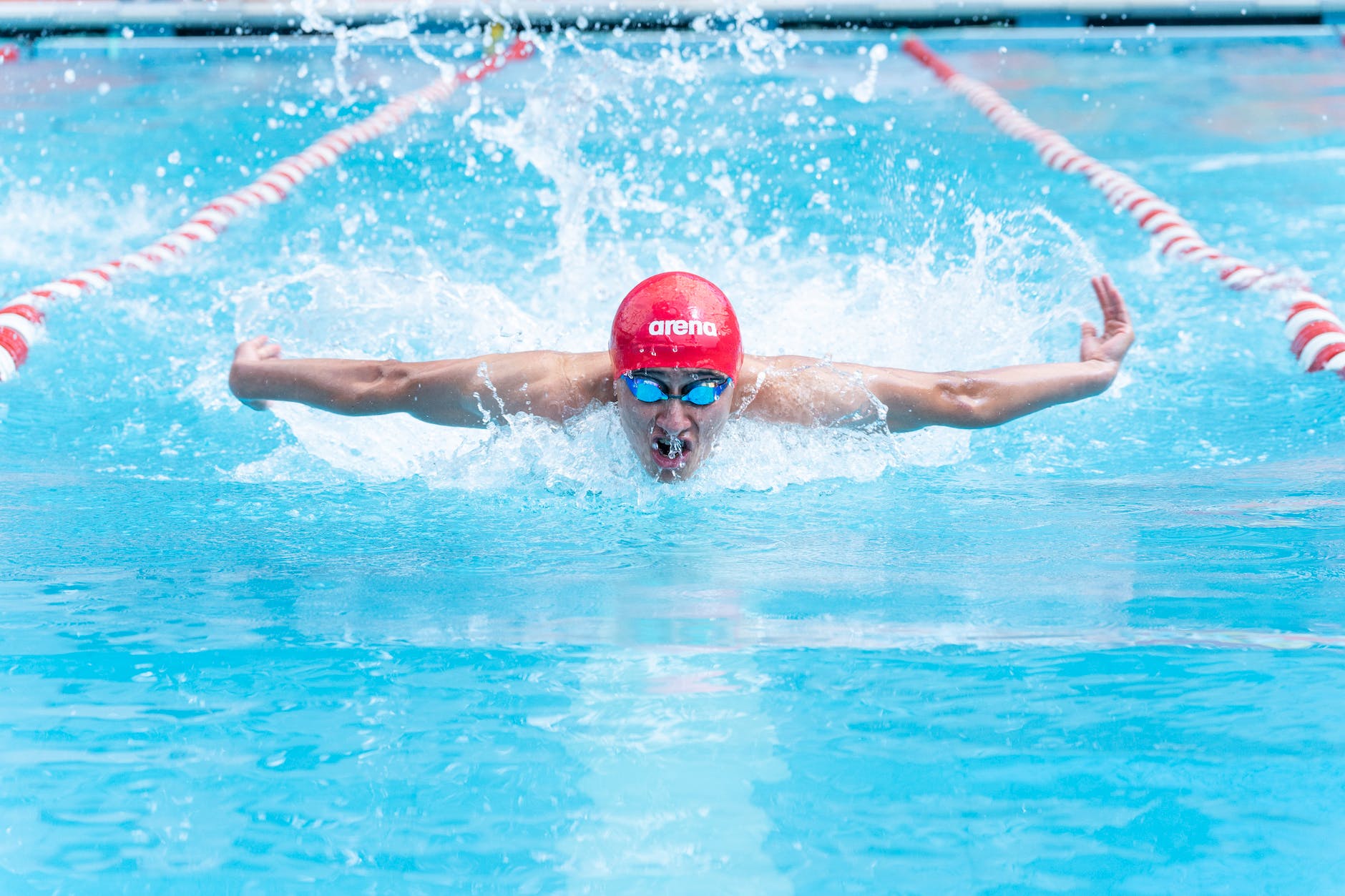When we think about swimming, we are often amazed by how graceful athletes look as they move through the water.
But guess what? This sport has hidden depths beyond what you can see on the outside. There are different ways to swim, each with its own special way of moving and style.
In this article, we are going to answer a really interesting question: “Which swimming stroke has a wider stroke than the regular style?”
Whether you are someone who loves swimming a lot or you are just curious about how it all works, come along with us as we explore the world of swimming and find out about that truly one-of-a-kind stroke.
What is the Regular Swim Style and How Does It Work?
The freestyle stroke, also known as the front crawl is the regular swim style. It is a dynamic and fluid swim style. Its primary goal is to move the swimmer forward by using an alternating arm and leg motion.
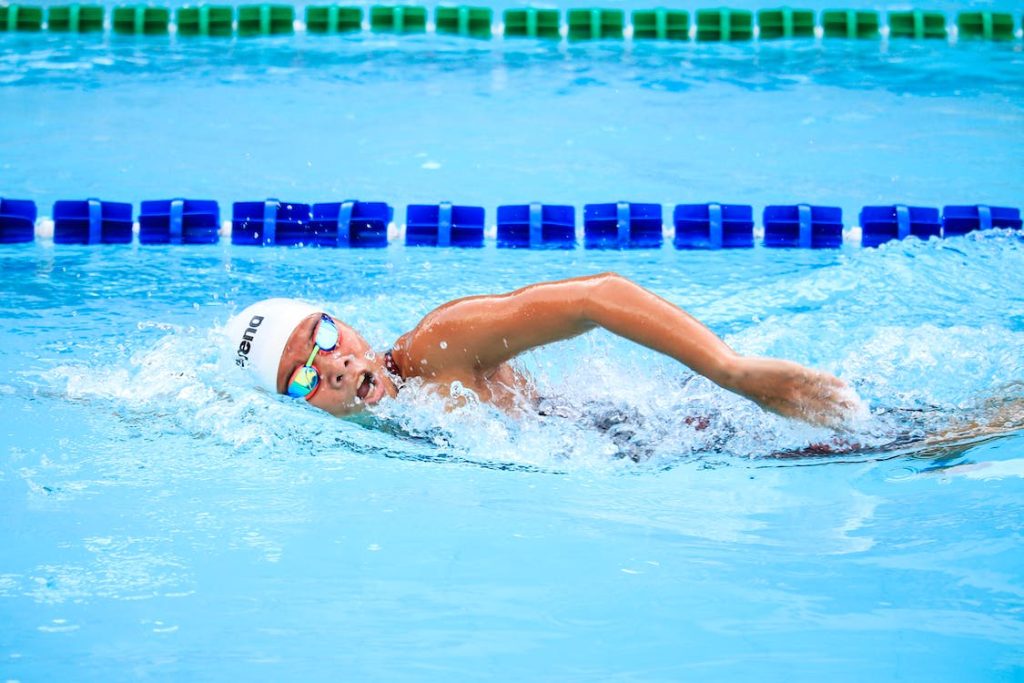
While the freestyle stroke is a basic swim style, it does have some limitations, especially related to how wide you move your arms. These limits are because of how our bodies are built and how the stroke works.
Let’s break down the mechanics of this swimming stroke:
-
Body Position: A streamlined body position is essential for minimizing drag and maximizing speed. Swimmers maintain a horizontal position, with their faces in the water and body aligned to reduce resistance.
-
Arm Movement: The arms play an important role in moving the swimmer forward.
One arm extends forward underwater while the other arm recovers above the water’s surface. This alternating motion ensures a continuous and efficient rhythm. -
Catch and Pull: As the recovering arm enters the water, the hand extends and points downward to initiate the “catch.”
The catch involves using the forearm and hand to grip the water and generate propulsion as the arm pulls through. -
Breathing Technique: Timely breathing is vital for maintaining a consistent pace.
Swimmers typically turn their heads to the side during the arm recovery, allowing them to inhale while keeping the body streamlined.
What is the Swimming Stroke that has a Wider Stroke than the Regular Style?
The butterfly stroke is the swimming stroke that has a wider stroke than the regular swim style.
Many people consider the butterfly stroke to be the toughest yet most amazing way of swimming.
It’s a beautiful mix of being strong, moving in rhythm, and being very accurate, making it a stunning show in the water.
But what makes the butterfly stroke special is how its wider and more energetic way of moving sets it up for an exciting and thrilling performance in the water.
The butterfly stroke is more than just a swimming stroke or style; it’s like a show of how strong, graceful, and dedicated swimmers can be.
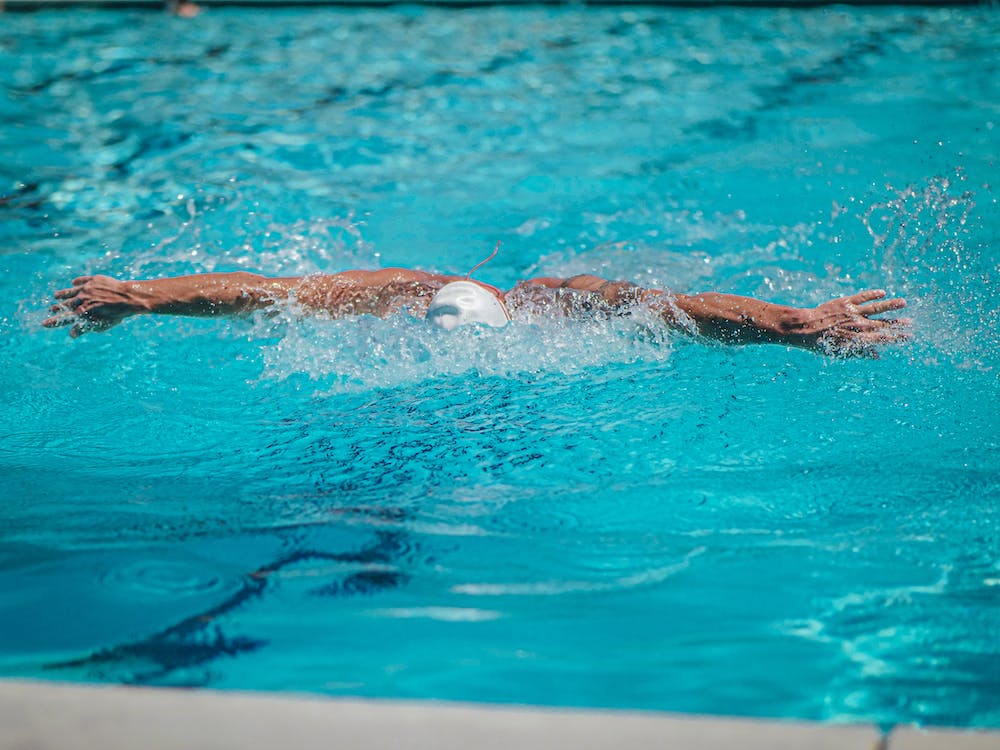
Swimmers like the butterfly stroke because it is a unique and tough challenge, and they feel super excited when they become very good at its moves.
But for people watching, they can’t help but be amazed by how beautiful the stroke looks. The way the arms and legs move, the power in every kick and pull, and how the body moves like a wave – it’s like watching a graceful dance.
What is so interesting about this stroke is that it can make you feel amazed and impressed, whether you’re watching it from the side of the pool or practicing it in the water.
The butterfly stroke can make you feel proud of what you’ve achieved as a swimmer, and it helps you feel like you are specially connected to the water.
It’s more than just a skill; it’s a way for people to show they can conquer the water world with their special techniques, skills, and determination.
What Makes the Butterfly Stroke Different?
-
Both Arms Move Together: Unlike the alternating arm motion of the freestyle stroke, the butterfly stroke makes both arms move at the same time.
The arms sweep through the water like a butterfly’s wings, which helps the stroke cover more space sideways.
- Powerful Leg Kick: In the butterfly stroke, swimmers do a powerful leg kick that makes the stroke even wider. This kick, like a dolphin’s movement, adds extra push to go along with the arm motions.
-
Body Moves Up and Down: Swimmers use a wavy body motion to make the butterfly stroke work very well.
This up-and-down movement, combined with the wide arm sweep, helps the stroke cover a lot of distance and move forward. -
Breath Control: Timing is super important in the butterfly stroke. Swimmers need to breathe at just the right time while moving their arms and legs.
They take a breath when they bring their arms up, making sure they keep going smoothly in the water.
Techniques to Master the Butterfly Stroke
The butterfly stroke, demands a combination of skill, strength, and coordination to execute correctly.
Below are the techniques that can help you master the butterfly stroke and also address the challenges that come along with perfecting this technique:
- Strong Core and Upper Body:
The butterfly stroke relies heavily on your core and upper body strength. To execute it well, engage your core muscles and use your chest, shoulders, and arms to pull through the water.
Regular strength training exercises targeting these areas can greatly enhance your performance.
- Synchronized Arm Movement:
Unlike the freestyle stroke, the butterfly requires you to move your arms at the same time. As your arms move forward, your chest should be pressed down.
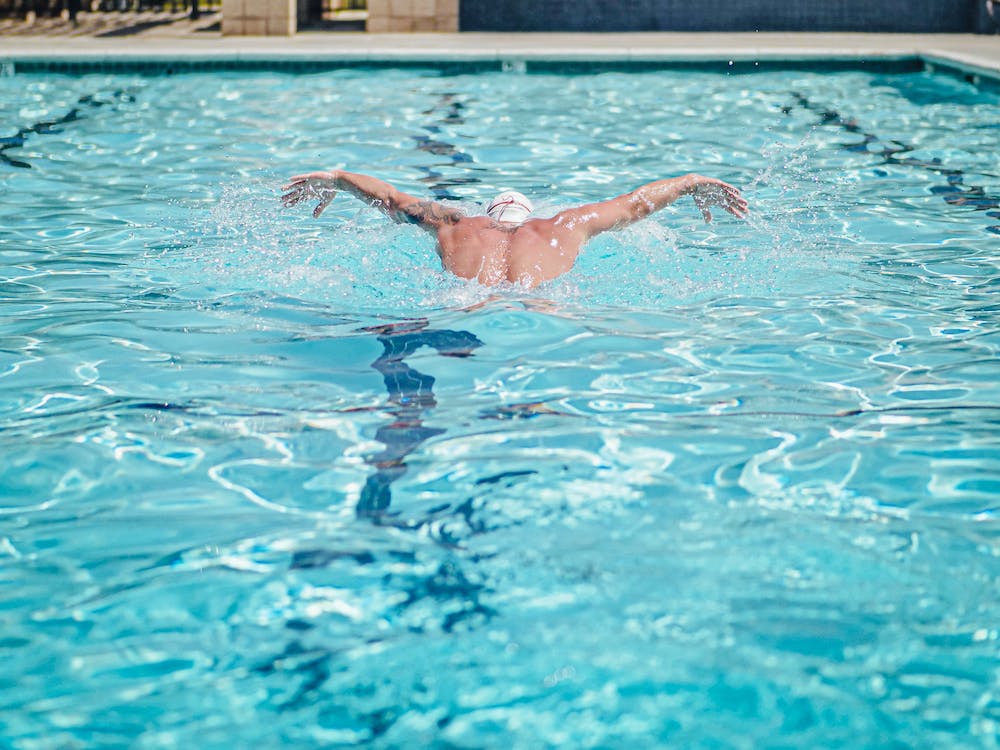
As you pull your arms back, your chest rises. This coordinated arm motion helps you maintain a smooth and efficient stroke.
- Practice the Dolphin Kick:
The dolphin kick is a key aspect of the butterfly stroke. Your legs should move in an up-and-down motion, similar to a dolphin’s tail.
Your feet should remain close together, and the power for the kick comes from your hips, not your knees.
- Flowing Body Movement:
When you are swimming, your body should move like gentle waves in the water.
As your upper body goes up, your hips should go down, and the other way around. This helps you keep going and makes sure your strokes are steady.
READ ALSO: What Happens When Swimmers Tie for Gold in a Competition?
The Challenges of the Butterfly Stroke Technique
- Timing and Coordination:
Mastering the butterfly stroke requires accurate timing and coordination between your arms, legs, and breathing.
Getting the rhythm just right can be challenging, but consistent practice and gradual adjustments can help you find the sweet spot.
- Physical Demands:
The butterfly stroke is physically demanding due to the requirement for strong upper body muscles and core engagement.
Fatigue can set in quickly, especially for beginners. Regular strength training and building endurance can help you overcome this challenge.
- Breathing Technique:
Breathing in the butterfly stroke can be tricky. Unlike other strokes, you need to time your breath carefully during the arm recovery phase.
This requires practice and control to ensure you get enough air without disrupting your stroke rhythm.
- Balance and Buoyancy:
Maintaining a balanced and streamlined body position is essential. If your legs drop too low in the water, it creates drag and makes the stroke less efficient.
Achieving the right balance while keeping a strong kick and arm movement can be a fine art to master.
Why Swimmers Should Embrace the Butterfly Stroke
The butterfly stroke isn’t known as the most challenging swim style for nothing. Learning it requires dedication and practice, which can be highly rewarding.
Swimmers who embrace the challenge find themselves growing in strength, endurance, and technique, which can positively impact their overall swimming ability.
The butterfly stroke is often referred to as the “butterfly dance” due to its graceful and captivating nature. When executed well, it’s like a symphony of movement in the water.
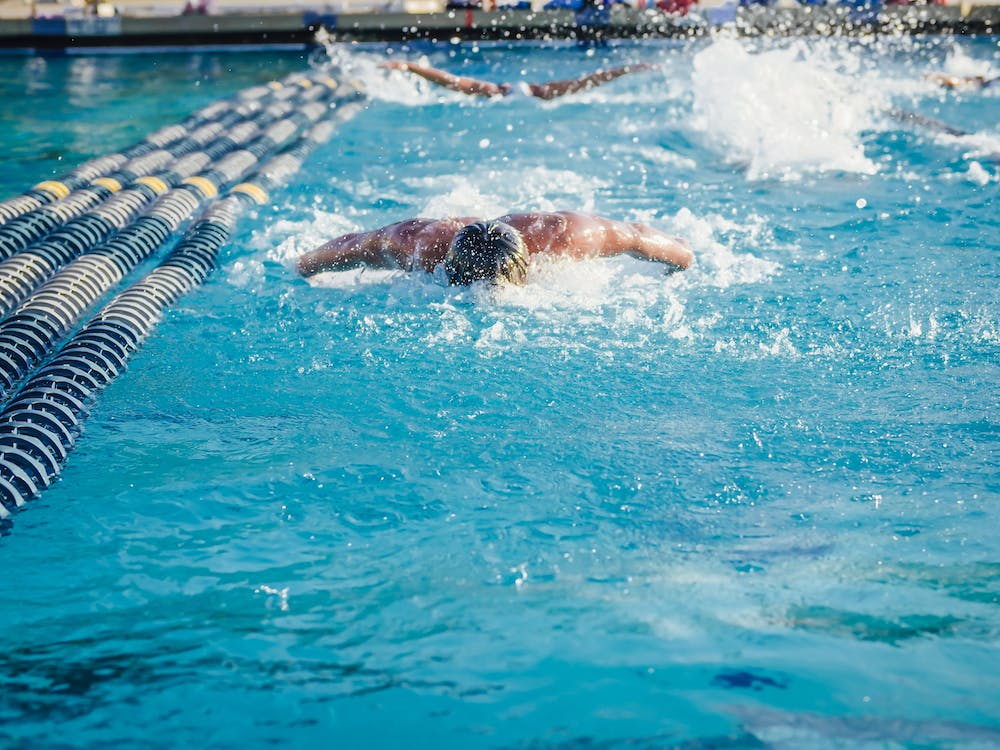
Swimmers who embrace this stroke get the chance to express themselves artistically and stand out in the pool.
The butterfly stroke engages your entire body, from head to toe. This provides a comprehensive workout that builds not only upper body strength but also core and leg muscles.
Embracing the butterfly stroke can contribute to improved muscle tone and overall fitness.
Advantages of the Butterfly Stroke over the Regular Style
- It Helps Swimmers Develop Stronger Core:
Unlike the regular swim styles, the butterfly stroke demands a powerful core engagement.
By learning and practicing this stroke, swimmers develop a stronger core, which is essential for stability, balance, and better overall swimming posture.
- It Enhances the Lung Capacity:
Breathing in the butterfly stroke is a unique challenge, as it requires timing breaths with arm and leg movements.
This practice can lead to improved lung capacity and breath control, benefiting swimmers in all their swimming endeavors.
- It Improves Coordination:
The butterfly stroke’s demanding technique develops swimmers’ coordination skills.
Coordinating simultaneous arm and leg movements while maintaining proper body flow strengthens the brain-muscle connection, which can have a positive impact on other swim styles as well.
- Helps Swimmers Stand Out With Style:
Becoming really good at the butterfly stroke makes swimmers look amazing and technically skilled.
During competitions, swimmers who do the butterfly stroke well often have a cool advantage. They catch the eyes of judges and people watching, leaving a strong memory that lasts.
READ ALSO: How Using Anti Fogger for Goggles Can Transform Your Swimming Experience
Tips for Switching to the Butterfly Stroke
-
Tip 1; Build Core and Upper Body Strength:
The butterfly stroke heavily relies on a strong core and upper body. To ease the transition, incorporate exercises that target these areas into your training routine. Planks, push-ups, and pull-ups are great choices.
Strengthening these muscle groups will not only improve your technique but also enhance your overall swimming performance. -
Tip 2; Focus on Technique and Timing Mastering the butterfly stroke:
Technique is essential. Break down the stroke into its components – the arm movement, leg kick, and breathing. Start by practicing each part separately before putting them all together.
Pay attention to the timing of your movements, as a well-coordinated stroke will help you move through the water more efficiently. -
Tip 3; Start with Short Distances:
As you begin switching to the butterfly stroke, start with shorter distances.
Gradually increase the distance as your comfort and technique improve. This approach will help you build confidence without feeling overwhelmed by the stroke’s demands. -
Tip 4; Practice Breathing Techniques:
Breathing is a crucial aspect of the butterfly stroke. Focus on developing a rhythm that works for you. Some swimmers prefer taking a breath every two strokes, while others opt for every stroke.
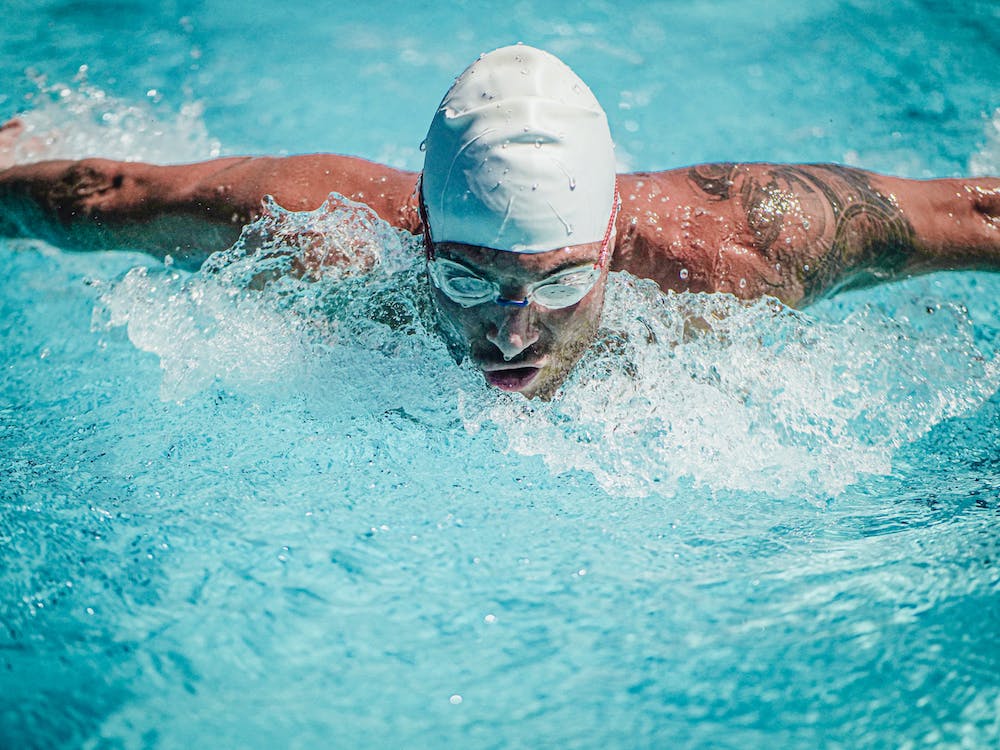
Experiment and find what suits you best. Practice breathing to the side while maintaining the stroke’s flow.
-
Tip 5; Seek Guidance and Feedback:
Working with a coach or an experienced swimmer can provide valuable insights into your technique. They can identify areas that need improvement and offer personalized guidance.
Don’t hesitate to ask for feedback, as it will significantly expedite your progress.
Ways to Track Your Progress When Switching to the Butterfly Stroke
- Time Trials: Record the time it takes you to swim a certain distance using the butterfly stroke. Regularly retest yourself to see if you’re getting faster.
- Distance Milestones: Set goals for the distance you can swim using the butterfly stroke. Gradually increase the distance as your stamina improves.
- Technique Checkpoints: Record videos of your swimming sessions and compare them to instructional videos or demonstrations. Look for improvements in your arm movement, kick, and body position.
- Breathing Comfort: Track how well you’re managing your breathing during the stroke. Note any progress in maintaining a consistent breathing pattern.
READ ALSO: How to Master the Art of Making a Bubble Ring Underwater as a Swimmer
Conclusion
In conclusion, when it comes to the question of which swimming stroke has a wider stroke than the regular style in the sport of swimming, the butterfly stroke stands out.
This stroke is known for its graceful yet challenging technique. It involves moving both arms in a circular motion, similar to how a butterfly’s wings flutter.
This stroke is known for its challenging technique, and It involves moving both arms in a circular motion, similar to how a butterfly’s wings flutter. This special arm movement makes it different from the other strokes, making it the obvious choice for a wider stroke.
While the freestyle, backstroke, and breaststroke each have their own unique styles, the butterfly stroke’s wide and synchronized arm movement makes it stand out in terms of stroke width.
So, whether you love swimming a lot, enjoy watching swimming events a lot, or just want to know more about what’s under the water, the wider stroke invites you to explore something new.
It’s like discovering a whole new side of swimming that’s exciting and different. So, go ahead, try it out, do something a bit different, and see how amazing swimming can be!
